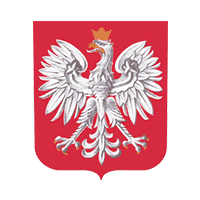Tadeusz MAŚLISZ, Wiesław JAKUBIAK
The article presents - amid the descriptions of machines, equipment and methods of mining aggregate deposits from under the water - basic environmental and technical hazards occurring in this type of mining activity. In terms of the occurring environmental hazards particular attention was paid to the risks of landslides and floodings, characteristic of this type of exploitation, and – among the technical hazards – to the ones related to transport and modernisation works conducted in the aquatic environment, including hazards related to difficult work conditions in bad weather (frost, cold or icing). In the case of works conducted in the immediate vicinity of deep water reservoirs, the necessity to apply safety regulations applicable to vessels on inland waterways was indicated. Under the provisions regarding work safety in open-pit mines, the mine operation manager is obliged to appropriately recognise hazards related to natural aggregate exploitation using amphibious excavators. In practice, the mine operation manager determines the conditions of safe conduct of mining activity not only on the basis of general provisions, detailed OHS regulations applicable in open-pit mining, and regulations applicable on vessels, but also based on characteristic regulations that consider the environment in which the exploitation from under the water takes place.
Janusz MIREK, Janusz KOZA, Łukasz RUDZIŃSKI
There, in the article the idea of a new approach to seismological observations in mining areas in Poland is presented. Based on experience in working with different networks in the LGCD (Legnica-Glogow Copper District) and USCD (Upper Silesian Coal District), there is opened discussion needed by profession, on the possibility of designing a comprehensive seismic monitoring. This type of approach will significantly improve the determination of seismic source parameters like location or estimation of shocks energy. As a consequence, the accuracy of the analysis of seismic hazard in mines and impact of exploitation on the surface will increase. Despite the unquestionable and obvious advantages of the comprehensive network, different categories of problems are presented, which have been faced during the design work. Some of the problematic elements can be solved using currently available options. Nevertheless, key ones, such as the conversion of formats or the creation of databases, require discussion within the scientific community and practitioners from coal and copper mines.
Arkadiusz ŁUKOWICZ, Marcin GRABOWSKI
The development of geographic information systems provides the possibility of interaction of various IT systems, which is aimed at joint performance of specific tasks related to processing and transferring information. The provisions applicable during mining plant operation allow for using mining maps in the form of electronic documents; they do not, however, determine the standards applicable during their preparation. This means that these documents can be prepared in any data saving format. The lack of developed standard of saving geological and mining data significantly limits the exchange of information between various systems. It is, therefore, necessary to develop standards regarding an unambiguous and normalised method of the saving, transfer, and shared use of data in the extractive industry. This article explains the technique of standardising selected mining map content using the standardised GML language, providing a developed application schema designed for storing mining data (Fig. 1). A sample GML document with selected content of a mining map (Fig. 2 and 3) and a visualisation of the objects included in the file (Fig. 4) were prepared on the basis of the schema.

-2019.jpg)